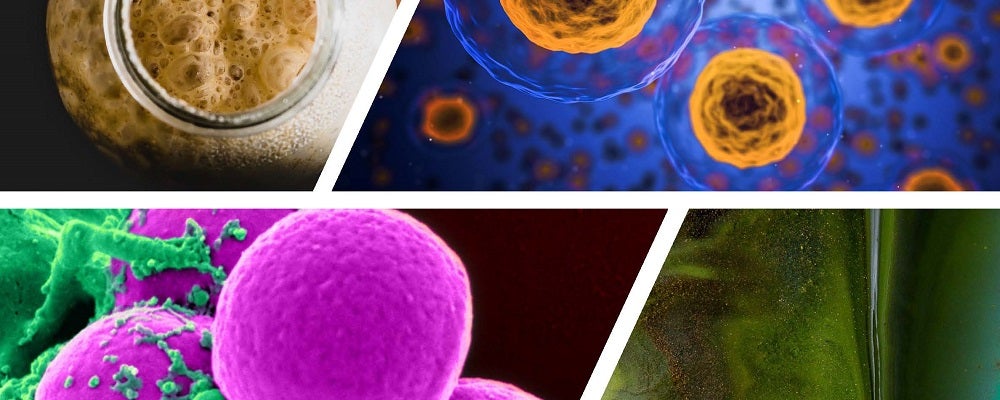
With the addition of new faculty, Professors Yilan Liu, Elisabeth Prince, and Christian Euler, to an already established group, the Department of Chemical Engineering now has the largest number of metabolic engineers in Canada. This is significant because when people think about our dependency on fossil fuels, we think about energy, not realizing that our dependency goes much deeper than that.
People would be shocked to realize that many items we use daily are derived from petroleum. This includes all clothing that is not 100 percent cotton, linen or silk, cosmetics, plastics, glue, polishes, and veneers on furniture and more.
Metabolic engineers are uniquely positioned to create new feedstocks to break our dependency on fossil fuels. They use living organisms such as bacteria, yeasts, and living cells as industrial cell factories to create the products of the future.
The faculty members refer to themselves as BioWorks Waterloo. Their research falls under the biotechnology/biomedical/metabolic engineering research area.
Research interests are diverse within the group. Current research spans the gamut from using seaweed to improve vascular grafts, 3D printing of food, utilizing animal cells to improve therapeutics, optimizing systems to enhance drug delivery, designing a new generation of medical micro-robots, and creating the world’s first biobased glycolic acid.
Researchers
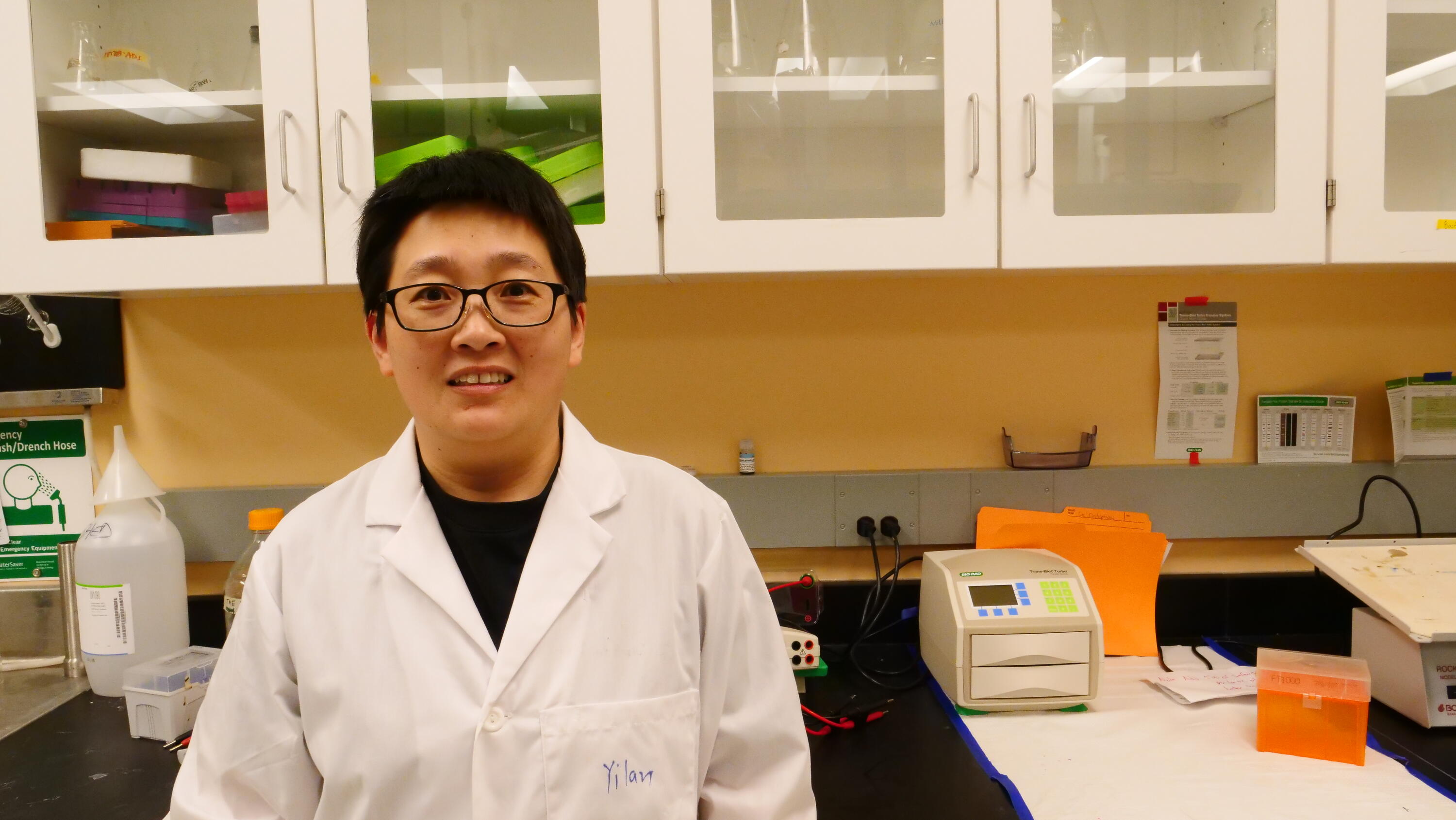
Yilan Liu
Professor Yilan Liu’s research focuses on harnessing synthetic biology for sustainable development by redesigning and reconstructing bacteria and their communities. She focuses on creating genome-modified functional probiotics to create affordable preventative health solutions. She has designed and will build probiotics to perform specific functions to improve health. One strain of bacteria will be engineered to consume fat to help with cases of obesity; while another strain to consume ethanol for alcohol addictions; a third strain of bacteria to produce beta-carotene to fight night blindness.
Liu’s work extends into clean environmental biotechnology as well. One of her research interests is creating symbiotic bacterial consortia for mixed waste upcycling. Typically, bacteria compete against each other for survival. Liu focuses on designing and engineering bacteria to lose a specific function which then is provided by another strain of bacteria forcing them to depend upon each other to establish a symbiotic relationship within the bacterial culture. Liu is engineering specific bacterial communities to consume mixed plastic wastes instead of alternative energy sources.
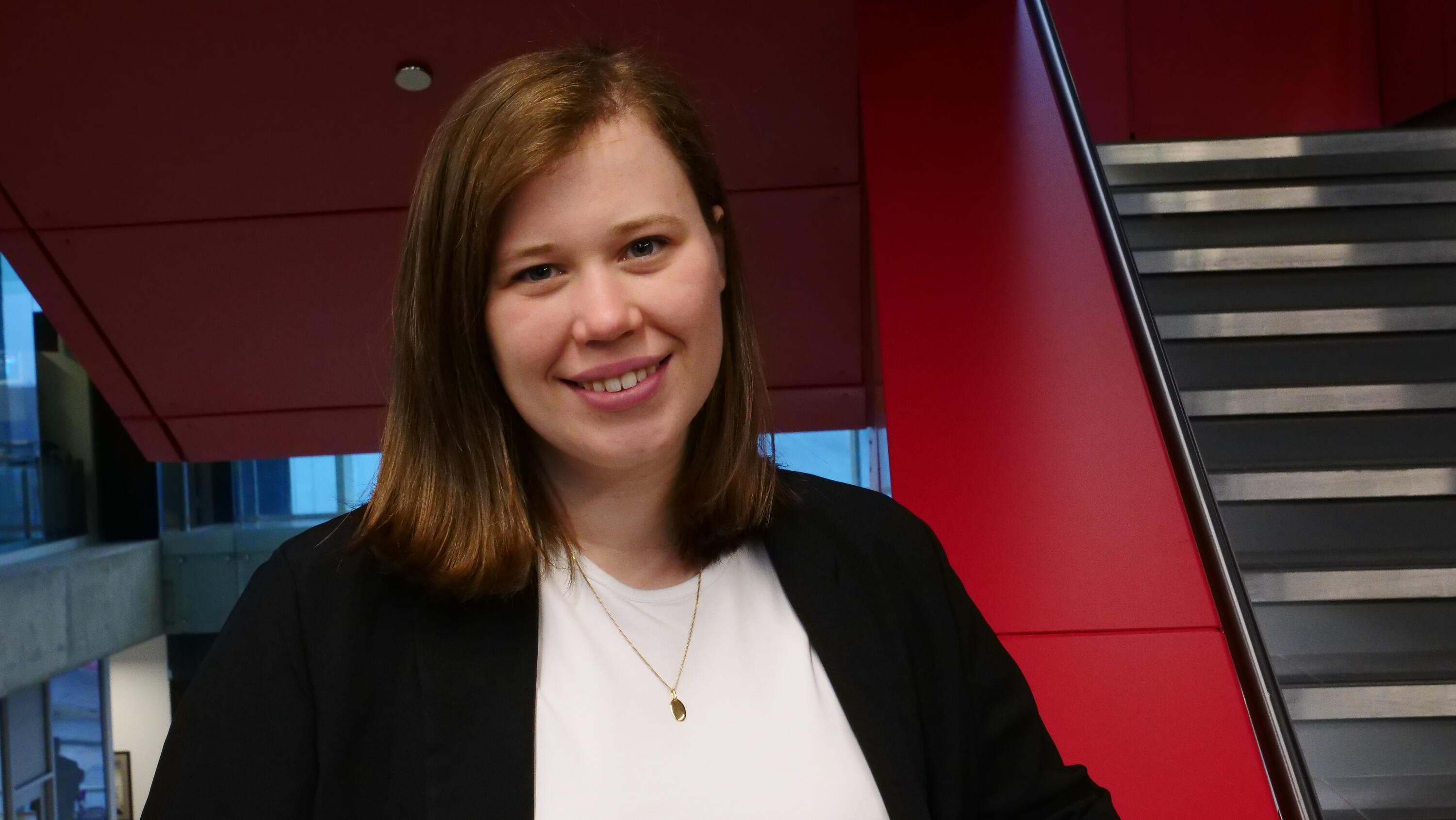
Elisabeth Prince
In the Prince Polymer Materials Lab, Professor Elisabeth Prince designs polymer-based materials for use in biomedical applications.
Prince has used nanocellulose to build hydrogels for growing patient-derived microtumors. The aim of this research was to grow mini versions of a patient’s tumour to test the efficiency of cancer treatments before the patient must undergo the treatment.
One of Prince’s current research goals is to develop biomimetic hydrogels that can be injected into human patients for applications in both drug delivery and regenerative medicine. Prince’s research aims to use injected filamentous hydrogel material to regrow heart tissue damaged after a heart attack.
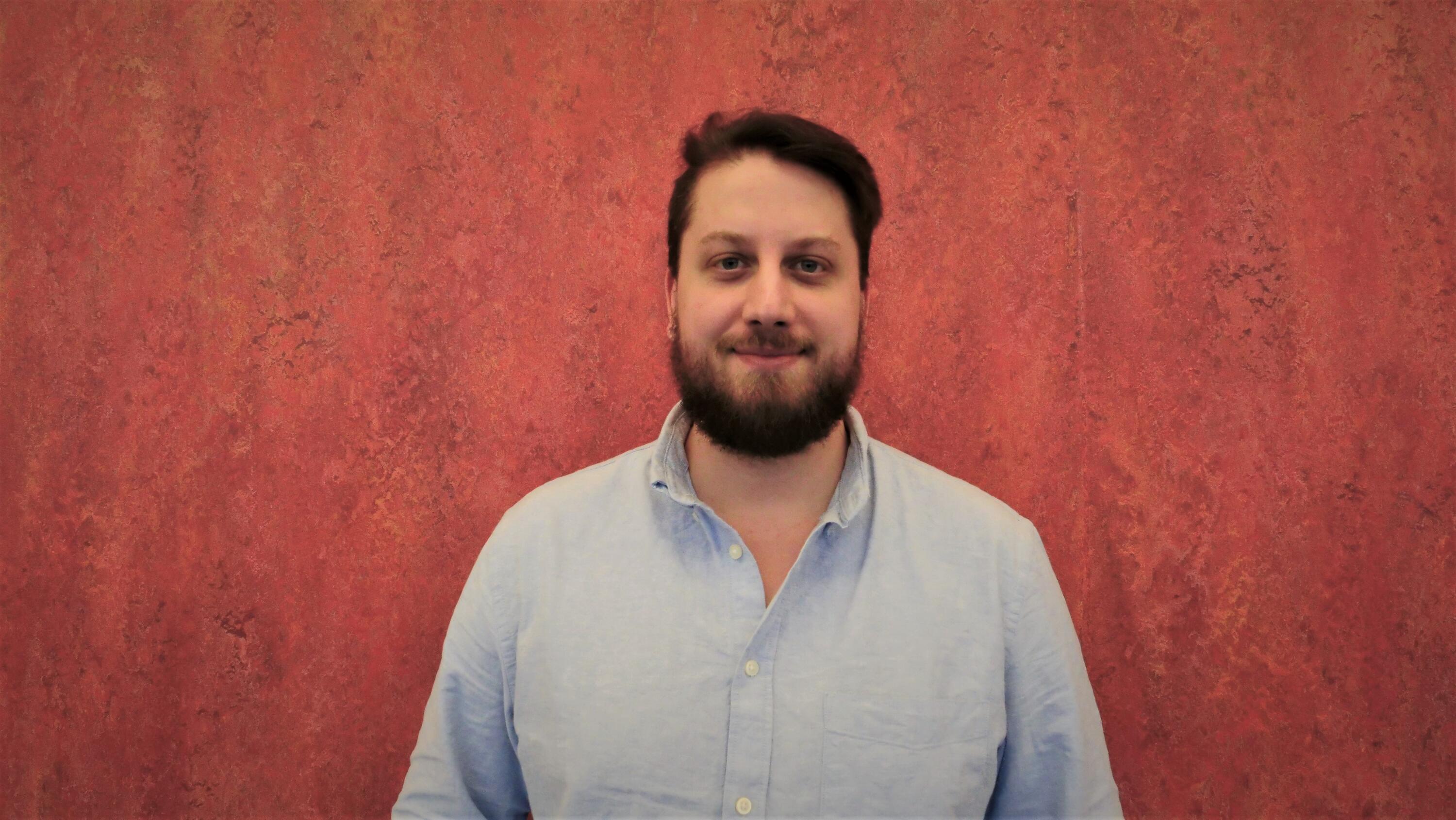
Christian Euler
Professor Christian Euler’s research themes involve finding new-to-nature pathways built out of existing biochemistries. One of his research areas aims to engineer bacteria to eat harmful plastics that are accumulating in the environment because they're difficult to recycle and to produce biodegradable, renewable polymers from them. Euler plans to collaborate with Professor Liu to further this research.
Euler is also using CO2 from the environment as a feedstock to produce useful chemicals and biofuels. This process involves integrating electrocatalytic reduction of CO2 with precision fermentation to produce chemicals like polymers, biofuels, solvents, etc. Euler hopes to engineer bacteria to be able to eat the chemicals made from CO2 and use them to make something useful. Eventually, he plans to engineer bacteria to eat CO2 directly - the integrated process is a stepping stone to getting there.
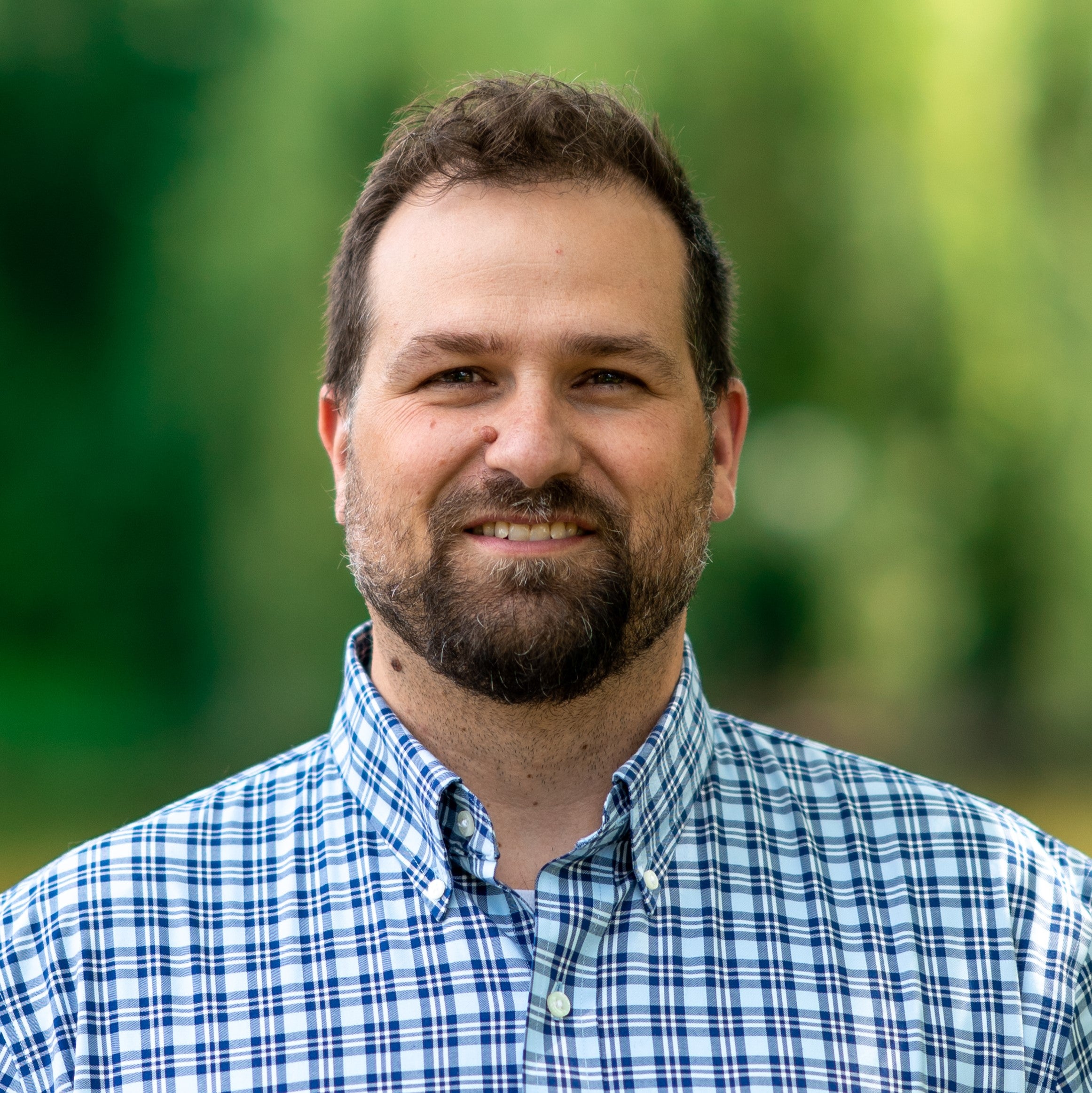
Marc Aucoin
Professor Marc Aucoin describes his research as “farming with cells”, in essence manipulating cells to produce specific outcomes. In his Applied Virus and Complex Biologics Bioprocessing Research Lab, researchers are developing high-value therapeutics using animal cells. He infects the animal cells with a virus to genetically program them to contain instructions which will direct the cell to create specific products that are used as therapeutics.
The language of this instruction is DNA which is controlled by molecular biological processes. Specific DNA sequences are recognized by the living cell. Sequences known as “promoters” tailor how much protein the cell can produce. Aucoin customizes how much of these proteins are made by the cells to optimize vaccine production. The Aucoin lab produces Sars, influenza and herpes vaccines as well as drugs such as Herceptin, which is widely used to treat breast cancer.
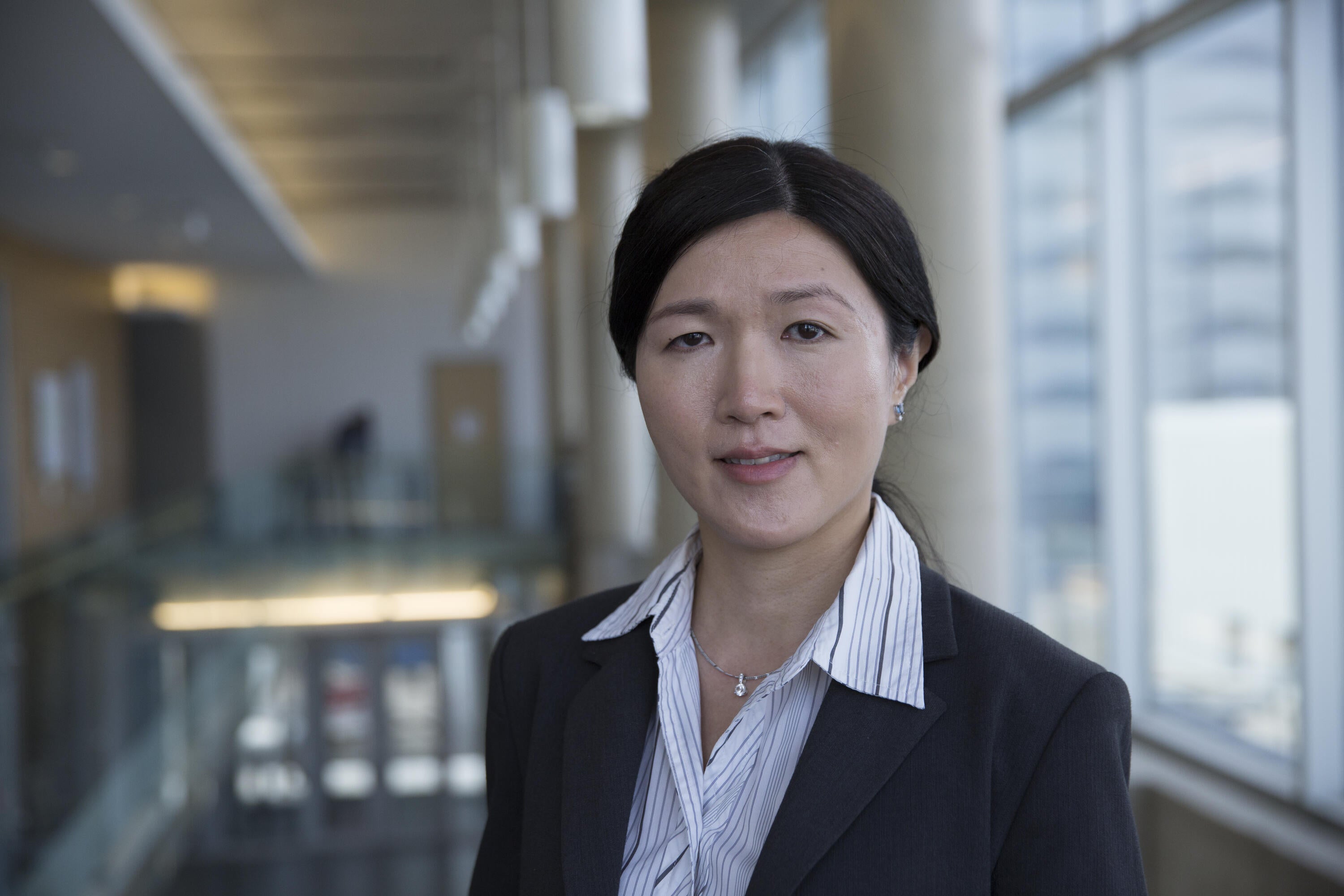
Evelyn Yim
Professor Evelyn Yim recently had a biomedical breakthrough using seaweed molecules to improve vascular grafts for bypass surgeries. Even the graft material itself was made from polymers designed by Yim. Yim created polymer grafts to replace blood vessels less than six millimetres in diameter, which are prone to blood clots. She uses a nanotechnology technique known as micropatterning and adds seaweed molecules known as fucoidan to promote the growth of vascular cells around the inner surface of the graft.
Other research from Yim’s Regenerative Nanomedicine Lab centres on stem cell therapies. Yim is using a combination of topographical architecture and biochemical processes to convert stem cells and other cell types to neural cells. This can be used to treat patients suffering from degenerative diseases such as Parkinson’s Disease. Both microscale patterns and nanoscale patterns are applied to the surface on which the cells grow. The cell is then given instructions by a plasmid, which is a circular piece of DNA. The plasmid transfers genetic material or transcription factors to the cell. By utilizing this technique, Yim has demonstrated the ability to reprogram cells. A skin cell can be converted to a neural cell to replace neural cells that have died in patients with neurodegenerative diseases.
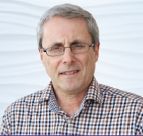
Hector Budman
Professor Hector Budman specializes in systems biology whereby mathematical modelling, control, and optimization techniques are applied to biochemical processes. Budman is currently collaborating with several pharmaceutical companies. For example, he is optimizing the productivity of the whooping cough vaccine manufacturing process for one of his industrial partners.
Another focus of his research is the manufacturing of monoclonal antibodies, which are proteins secreted by mammalian cells that are used to treat severe diseases such as cancer, osteoporosis, eczema, and more. He optimizes the biotechnological processes used to produce these proteins. These processes require the culturing of mammalian cells in a complex chemical medium containing nutrients for cell growth. By optimizing the composition of this medium, it is possible to improve both the quality and quantity of the antibodies.
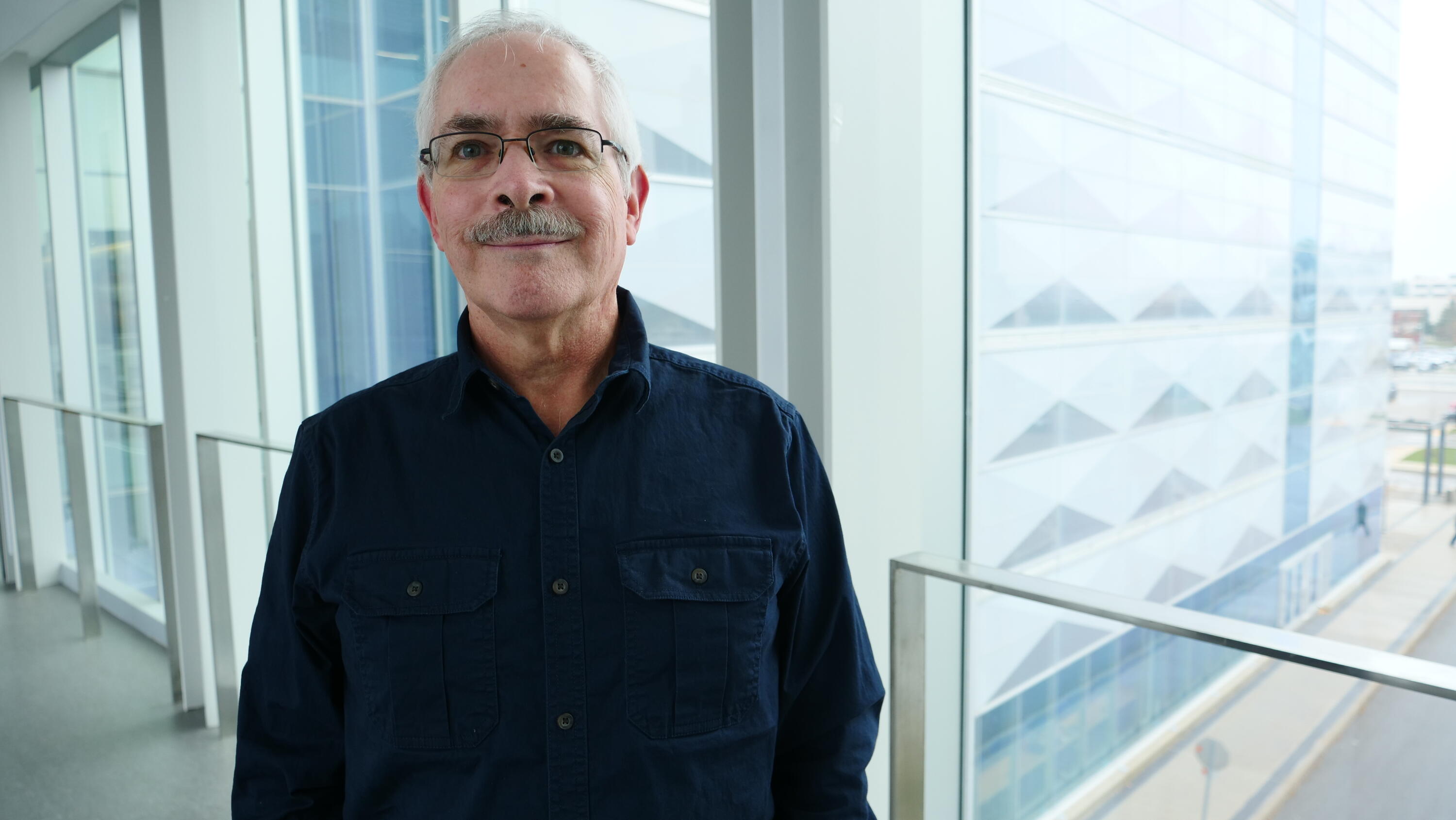
William Anderson
Professor William Anderson is working with antimicrobial technologies. His research develops materials that kill bacteria and fungi on contact on surfaces which will be of great use in medical settings, homes, clinics, or businesses. He uses metals such as copper, as well as chemicals to kill off pathogens to reduce the spread of disease.
Anderson is collaborating with Professor Boxin Zhao toward developing antimicrobial polymers that can be used as a coating for lab coats, for example, to prevent garments from becoming infected with harmful bacteria.
Anderson is developing technology for an industry partner which uses rapid tests to detect bacteria in water supplies by using nanoparticles and enzymes designed to interact with bacteria and selective growth media. Currently, it can take up to a week to get test results back from a lab. He is developing a rapid test that would function similarly to a pregnancy test, producing a result in 15 minutes to 6 hours. This is useful for dentist offices, as their waterlines can become heavily contaminated with bacteria. A test kit can quickly inform them if the water is unsafe, triggering flushing and cleaning protocols to treat the water.
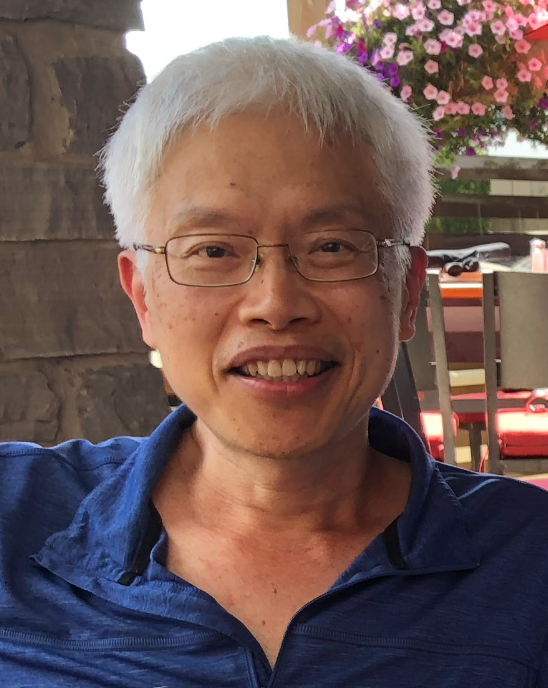
Perry C. Chou
Professor Perry C. Chou’s research is focused on biomanufacturing. He uses engineered bacterial cells as a whole-cell biocatalyst to elicit key reactions to produce valuable products such as protein therapeutics, industrial enzymes, special chemicals, and biofuels.
His multidisciplinary expertise in fundamental biological sciences and applied biochemical engineering critically mediates the creation of innovative strategies in biomanufacturing and seamlessly integrates various techniques for bioprocess development, including upstream genetic manipulation for strain engineering, midstream fermentation technology for cell cultivation, and downstream processing for bioproduct harvest and purification. Learn more about his specialization in bio-based production using microbial cell factories.
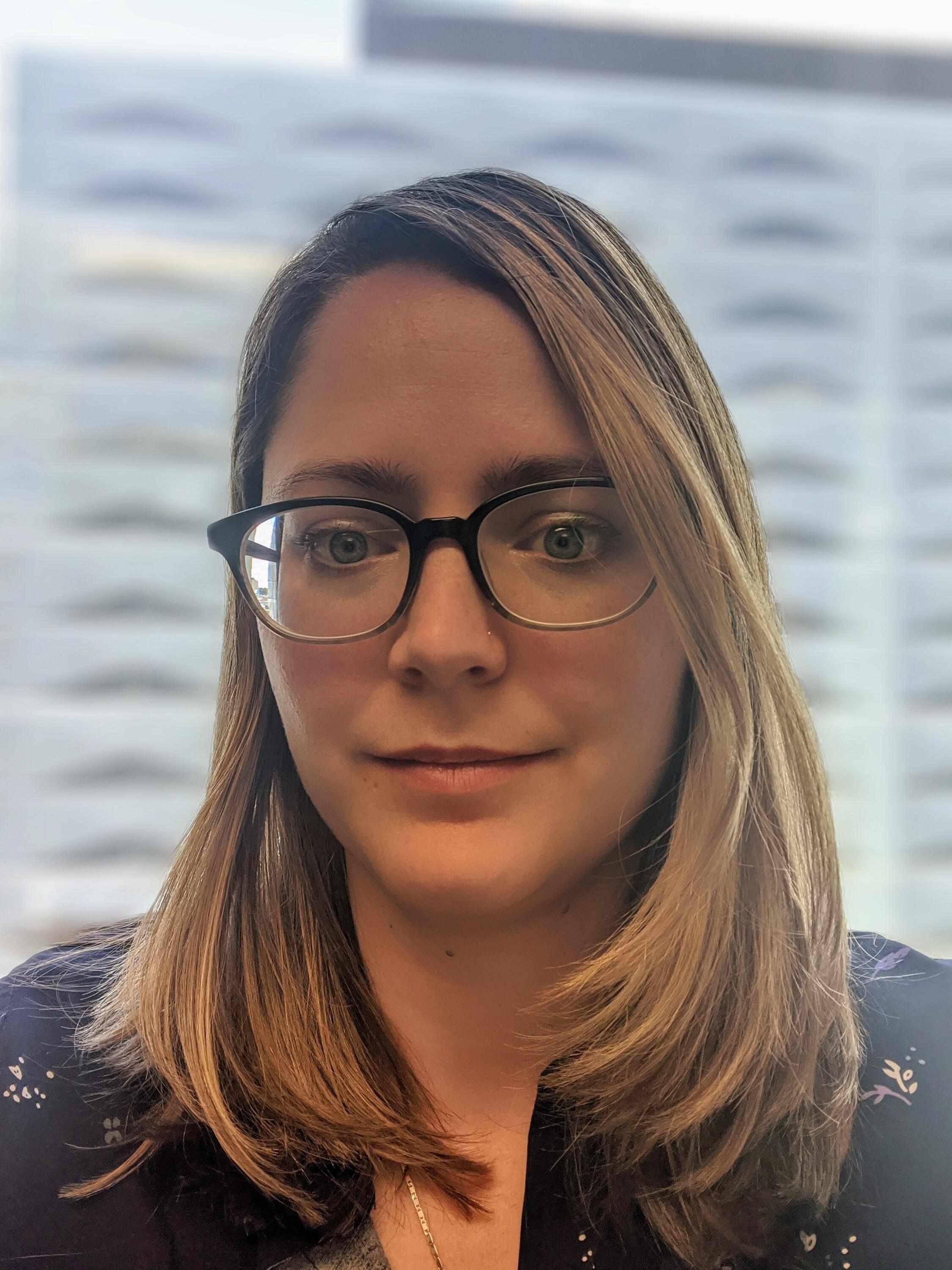
Valerie Ward
Professor Valerie Ward’s research aims to produce isoprenoids in new ways in bacteria such as E. coli. Isoprenoids are a large class of molecules made from the same metabolic pathway. Some of them are utilized to treat cancer or malaria, others are used as natural aromas or pigments in food or cosmetics for example. These molecules are already used in many different industries. The aim is to produce some of these compounds at a higher purity level for a lower price. Using this technique with pharmaceutical compounds will help to make treatments more accessible.
Working with microalgae is another of Professor Ward’s research areas. Microalgae are like tiny single-celled plants that can produce isoprenoids in large amounts without any metabolic engineering. In her Microalgae Biomanufacturing Lab, the aim of the research is to employ small changes to create products at higher yields so that the plant enzymes will be more functional in the "plant-like" environment of an algae cell. As microalgae are photosynthetic, Ward hopes to produce these compounds using CO2 and sunlight in a sustainable process. The microalgae will be like tiny green factories sequestering CO2 and making the desired products.
Professor Ward and Professor Nasser Mohieddin Abukhdeir are also semi-finalists in the Deep Space Food Challenge. They are working to develop a new type of combined food growth and environment regeneration device.
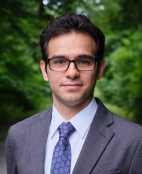
Hamed Shahsavan
Professor Hamed Shahsavan’s research aims to create a new generation of medical micro-robots and bio-devices. Shahsavan’s research has three main themes: materials, fabrication, and robotics. In his SMART-Lab, Shahsavan develops novel programmable smart materials that can mimic characteristics, and functionalities of tissues and biological organisms. Shahsavan, then, utilizes such materials as inks or structural materials for novel micro/nanofabrication and additive manufacturing techniques. Smart materials shaped to small-scale 3D structures are then used as micro-robots or devices that perform predetermined tasks.
To advance these objectives Shahsavan uses a multidisciplinary approach based on molecular engineering, chemistry, materials science, micro/nanotechnology, and biomedical engineering. Additive manufacturing of smart and programmable materials at small scales plays a key role in Shahsavan’s research, as well as study of bio-compatibility and desirable interaction of his materials and robots with living tissue and molecules.
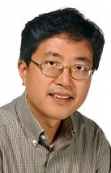
Pu Chen
Professor Pu Chen’s research focuses on a range of topics related to the nano-biomedical field. In Chen’s Biomedical Engineering and Energy Storage Group, researchers use peptides, short chains of amino acids, for a variety of drug delivery applications. Chen has designed specific peptide sequences to be used as delivery agents for anti-cancer drugs, short interfering RNA (siRNA) for use in RNA interference, as well as in HIV/AIDS vaccine design.
Chen and his students utilize peptides for therapeutic applications. Researchers are applying modelling to understand the fluid flow in solid tumours and how peptide-drug conjugates are taken up by tumour sites. Furthermore, the biocompatibility and hemocompatibility of these peptide-based nanoparticles must be understood, to ensure they are safe for use in vivo. Self/co-assembling peptides are also being used in the design of biosensors.
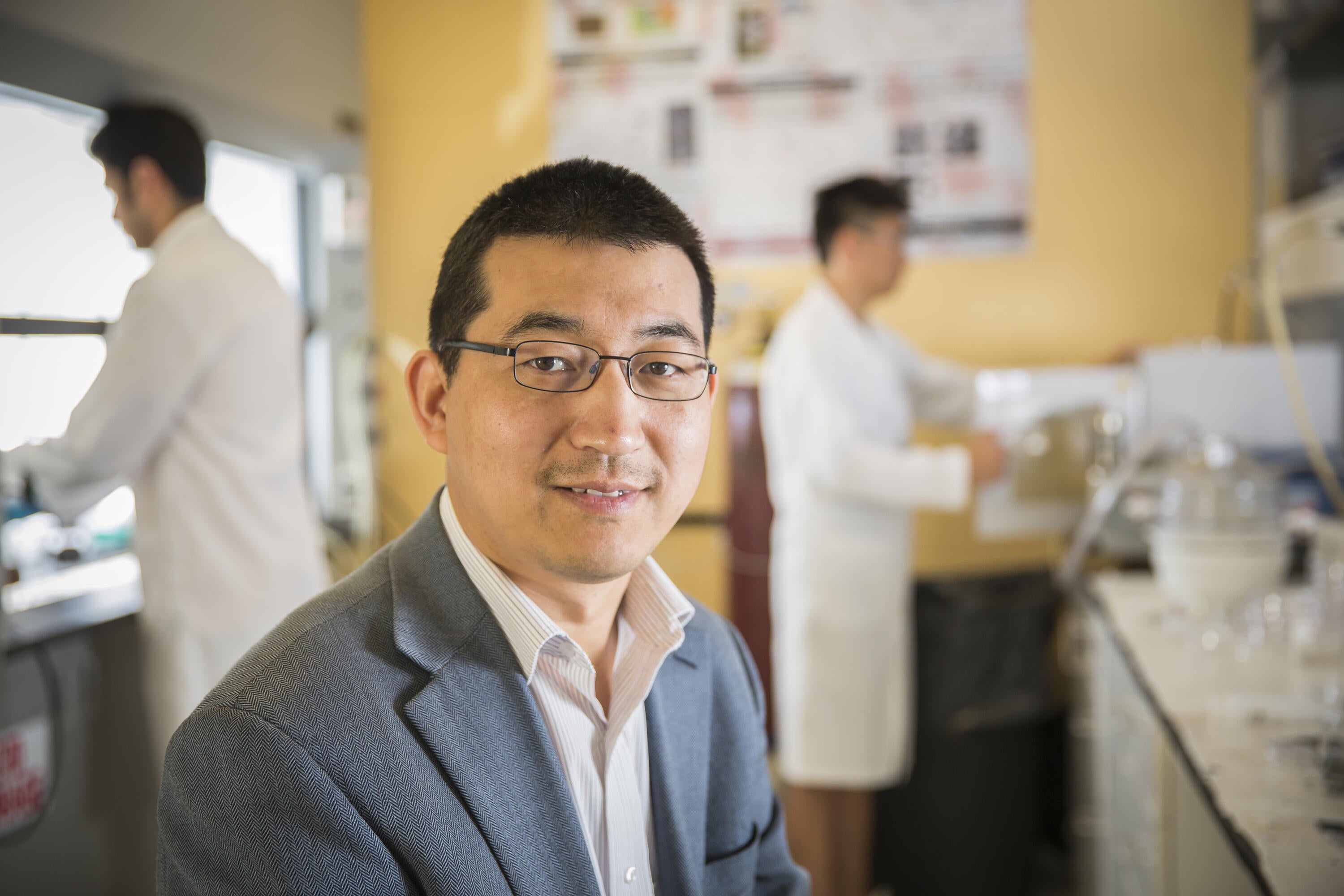
Boxin Zhao
One of Professor Boxin Zhao’s research interests is inspired by lizards, like the gecko and insects. Researchers from his Surface Science and Bio-nanomaterials Laboratory have created a tiny robot. The first of its kind that doesn’t require connection to an external power supply that can climb on inverted surfaces. It represents a significant milestone for utilizing biomimicry and smart materials for soft robotics.
Another of Zhao’s research areas is designing hydrogels which are similar in their physiochemical properties to human tissues. Researchers seek to understand the behaviour of hydrogels under external stresses and to control the surface and mechanical properties of the hydrogels. The hydrogels will be utilized in biomedical applications such as artificial tissues and bioadhesive materials.
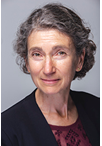
Christine Moresoli
Professor Christine Moresoli’s research interests are in the creation of food analogs and the 3D printing of food! Moresoli is working with biomaterials for food product applications. This includes the development of high protein content dairy analogs with plant protein sources such as soybeans and the development and user acceptability of textured pureed foods for elderly people that suffer from dysphagia or difficulty swallowing. Nearly half of long-term care residents are prescribed diets with modified textures. Moresoli takes pureed carrots for example and adds nutritional additives and then runs them through a 3D printer to recreate the shape of a carrot.
Moresoli is also collaborating with the Faculty of Environment to investigate controlled environment agriculture systems. Her research focuses on the lifecycle assessment of these systems, examining the environmental and economic impact of urban agriculture systems such as hydroponics.
Creating the technology of the future
The global challenge is to move away from dependency on fossil fuels as a feedstock for chemical synthesis. New products and materials derived from eco-friendly feedstocks pave the way to a sustainable future.
Working in harmony with the University of Waterloo’s strategic goal of fostering a collaborative culture of well-being and sustainability, these researchers are designing tomorrow’s critical technologies.